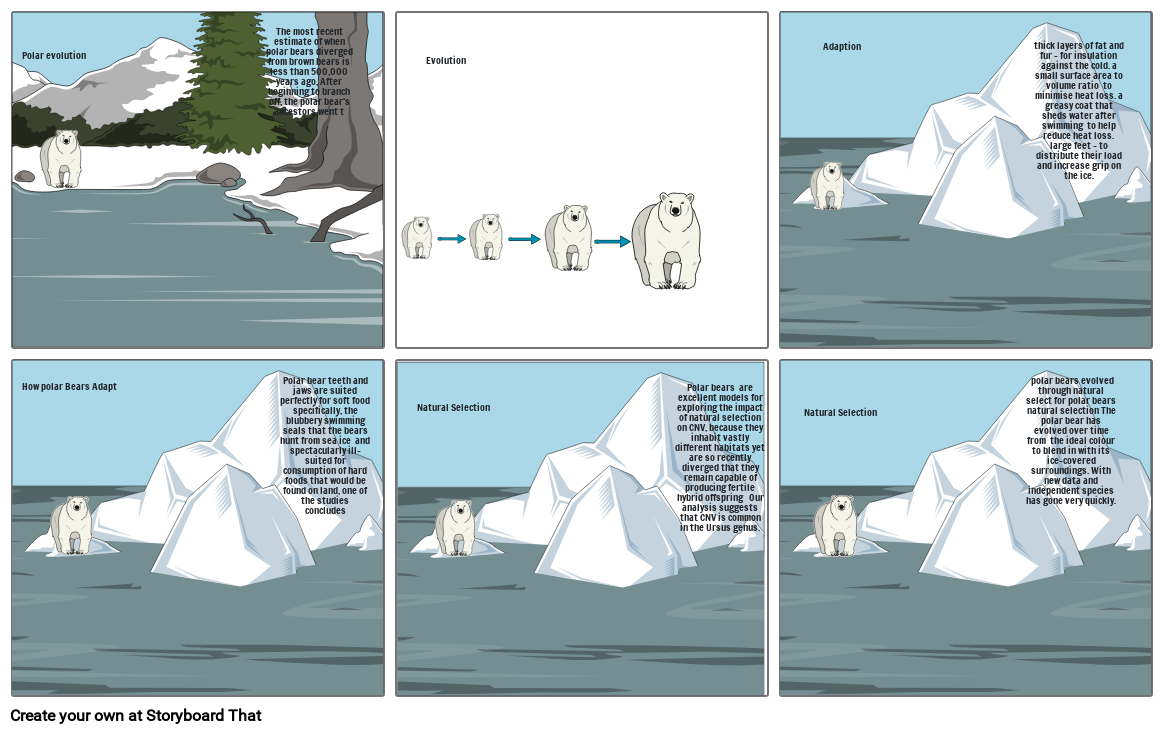Polar evolution

Storyboard Text
- How polar Bears Adapt
- Polar evolution
- The most recent estimate of when polar bears diverged from brown bears is less than 500,000 years ago, After beginning to branch off, the polar bear's ancestors went t
- Evolution
- Adaption
- thick layers of fat and fur - for insulation against the cold. a small surface area to volume ratio to minimise heat loss. a greasy coat that sheds water after swimming to help reduce heat loss. large feet - to distribute their load and increase grip on the ice.
- Polar bear teeth and jaws are suited perfectly for soft food specifically, the blubbery swimming seals that the bears hunt from sea ice and spectacularly ill-suited for consumption of hard foods that would be found on land, one of the studies concludes
- Natural Selection
- Polar bears are excellent models for exploring the impact of natural selection on CNV, because they inhabit vastly different habitats yet are so recently diverged that they remain capable of producing fertile hybrid offspring Our analysis suggests that CNV is common in the Ursus genus.
- Natural Selection
- polar bears evolved through natural select for polar bears natural selection The polar bear has evolved over time from the ideal colour to blend in with its ice-covered surroundings. With new data and independent species has gone very quickly.
Over 30 Million Storyboards Created
No Downloads, No Credit Card, and No Login Needed to Try!
